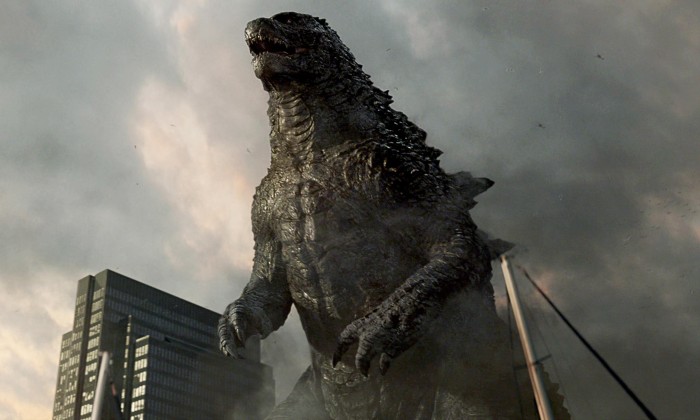Godzilla (USA, 2014). Director Gareth Edwards, writers Max Borenstein and Dave Callaham, starring Aaron Taylor-Johnson, Elizabeth Olsen, Bryan Cranston. 123 min
Applying an archetype to a creative endeavour will always be a difficult sell for the cynical. Include an iconic character, who is weighed down by predisposed fan expectation, it gets even harder. If that venture is also funded by Hollywood, it becomes something of impossibility. With this in mind, if you consider yourself to be one of these cynics – Godzilla is not for you. Go forward and sidestep this lumbering tent pole to find something more individualistic. This one’s for those for whom a step into the somewhat expected has an appeal…
Seriously considered for directing Godzilla, Guillermo del Toro was busy steering Pacific Rim (2013) in which Hollywood hoped to fuse the commerciality of a blockbuster with a cinematic vision of an auteur. It was ambitious, but deeply flawed, couple of satisfyingly crunching metal robot behemoths being an exception. But it was a film without a reason to really care, and the poor box office proved audiences didn’t either. How to solve that then, to create a film which would give Warner Bros their CGI answer to the tragically profitable Transformers franchise?
Raising an icon like Godzilla from the deep sea helps, and so does green-lighting a Max Borenstein script featuring Hollywood’s current favoured archetype – the origin story. Multiple billions of dollars have been earned employing this tactic, why not strap it to a monster instead of a (super)man and see if money still sticks? The most difficult thing was to add a director – Roland Emmerich’s experiment in 1998 proved that experience may not prevent a flop. Who better than Gareth Edwards with his previous film Monsters (2010) indicating that he is more than capable of handling the ultimate monster with the reverence to attract back hardcore fans. Sadly (or predictably, depending on your viewpoint) cynics of the blockbuster method will have no problem punching critical holes in the more predictable (or unavoidable) elements of Godzilla. But still, parts of the film work, and they work incredibly well. Mainly where Edwards is afforded time to sculpt Godzilla’s character: building tension for his eventual arrival is done effectively, and with a stronger subplot, these teases would only serve to enhance the cathartic release of the glee-inducing battle scenes, which are every bit as fun to watch as your inner 10-year-old craves. Almost every other scene in the film, which does not feature Godzilla, suffers badly. A palpable sense of formula lingers, the safety net inserted by Hollywood to protect its investment and the origin story slow sluggish sections down to an absolute crawl. Except for a wasted Bryan Cranston, all the human characters are frustratingly expendable. Whenever I was forced to watch Aaron Taylor-Johnson indestructibly stumbling around the screen, divulging his high-functioning military aptitude, I found my teeth gritting.
His wife, Elizabeth Olsen fares no better. She exists as the closest thing to a female MacGuffin cinemagoers have perhaps ever seen. Who goes to see a film about a 350-foot radioactive sea monster hoping to see the in-depth effect it has on a mundane working family? If they both refused to leave the screen, as Godzilla’s euphoric final battle arrived, one could just hope his primal roar could at least deafen them all from speaking anymore. If you find a way to drown out the white noise of Hollywood’s machinations, Godzilla surely offers a fun late night romp at the cinema.




